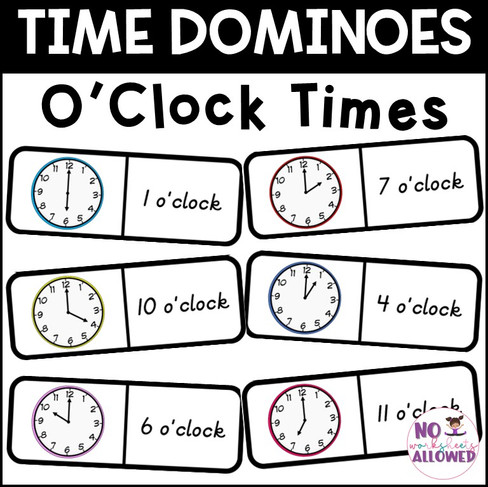Teaching children how to tell the time can be a rewarding but sometimes frustrating experience! Focusing on o'clock and half past is a great way to start. Begin by introducing the clock face and explaining the numbers and their positions. Use a simple analogue clock, showing how the hour hand moves slowly while the minute hand moves more quickly. Start with the concept of the hour, illustrating how the minute hand points to the 12 when the hour changes. After children have grasped o'clock, move on to half-past times, explaining that the minute hand will point to the 6 and is halfway around the clock.
Telling the Time Activities
Use real-life examples and practise with clocks and watches at home. At this stage, it's best if all the numbers are displayed on them and Roman numerals definitely won't be helpful right now! You could also make a paper plate clock and attach card hands with a split pin. Alternatively, use chalk to draw a clock face on the ground outside. Grab some large twigs for the minute and hour hands. Challenge your child to show different o'clock or half-past times on their clock. Can they relate the times to specific events in their day, such as lunch, play or bedtime? If you're short on time (!) and need a selection of resources for home or school, these six activities will also make learning to tell the time enjoyable and interactive.
1. Time Bingo
These engaging bingo games contain different bingo cards and o'clock or half-past times for calling. This classic maths game is sure to be loved by your class! They’ll learn to tell the time to the hour and half-hour in no time at all!
2. Telling the Time Hunt the Room
Children will enjoy learning to tell the time to the hour and half-hour with this fun ‘Write the Room/Scoot maths activity! There are clock cards for pupils to hunt for and differentiated recording sheets to fill in. Simply print, cut out and laminate the cards and then hang them around your classroom! You can choose to focus on either o’clock or half-past times (answer sheets included) or mix them up for a trickier challenge.
3. Time Dominoes
Develop children’s knowledge of o'clock and half-past times with these fun jumbo-size dominoes. They should match each clock with the correct written time. Engaging, hands-on learning for your maths continuous provision or to use at home!
4. Time Matching

Your class will enjoy telling the time with these fun flashcards! Children can match analogue and written or digital times. To make the activity even more interactive, ask them to make the times on small clock faces too. This activity can be used with the whole class, individuals or groups! Alternatively, these cards make a lovely interactive display.
5. Playdough Telling the Time

Teach children to tell o’clock and half-past times with these differentiated playdough mats. They should read the time, make the hands using playdough and place them in the correct positions on the clock. A really fun activity for little learners! For longevity, print the activity out and place the sheets in wipe-clean pockets!
6. Telling the Time Clip Cards

Develop children’s knowledge of time with these clip cards. They should work out the time shown on the clock and then use a clothes peg to choose the correct answer from the selection shown. Not only will children learn to tell the time, they'll also develop their fine motor skills! This activity is perfect for setting up on a tuff tray or in your maths area!
These activities make learning to tell the time fun and engaging. By incorporating hands-on experiences and games, children can grasp the concept of o'clock and half-past effectively. With creative approaches, the challenge of telling time can transform into a fun adventure for your little learners!
This 'Telling the Time Cut and Stick Activity Book' (available from Amazon) also provides an engaging approach to practising and building confidence with time. Children will learn to tell the time to the hour and half-hour in an enjoyable and interactive way. They should simply work out the time shown on each clock, then cut and stick the correct answers into the boxes. This workbook supports the National Curriculum and is perfect for home or school.











Commentaires